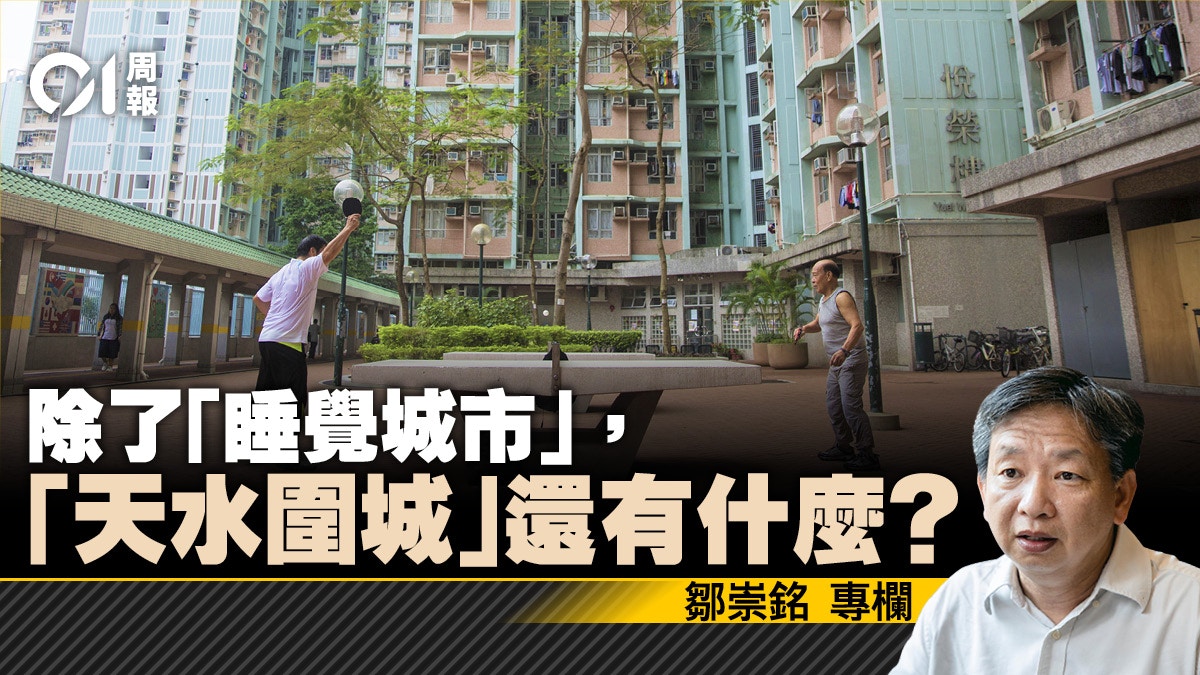The last "Policy Address" of Chief Executive Carrie Lam Cheng Yuet-ngor proposed to develop a 300-square-kilometer "Northern Metropolitan Area" in the northern New Territories, which is expected to become "the most active area for urban construction and population growth in Hong Kong in the next two decades." .
Zou Chongming pointed out in the article "Planning for New Towns Where People Have No Places" that we still cannot see from the official planning how the industrial development in the northern New Territories can meet the needs of local residents.
Moreover, with the expected increase of millions of people in the northern metro area, the commuting problem will pose a huge challenge.
Tracing back to the source, Hong Kong's new town planning originated from the Hong Kong-British era.
With the rapid industrial development in the 1960s, Kwun Tong and Tsuen Wan became the first satellite cities.
By the 1970s, Shah and Tuen had successively become the first-generation new towns in the New Territories, with self-sufficiency and balanced development as their main characters.
At that time, places such as Fotan, Xiaolekyuan, and Tuen Old Market were all planned as large-scale industrial areas to meet the local employment needs of the local population.
In the 1980s, Hong Kong's industry gradually moved northward, and the self-sufficiency expectations of the new towns gradually fell.
The third generation of new towns appeared in the 1990s, and Tin Shui Wai, Tseung Kwan O and Tung Chung took on completely different looks.
At this time, industrial areas have become bright flowers, and these areas cannot retain their original communities and economic activities. They are only required to meet the needs of home buying and living. Residents have to travel long distances to work across districts. Therefore, these new towns are also It's called "Sleeping City".
The main feature of these new town plans is that decision makers dominate all activities in the region from a top-down perspective, as if they were creators, but they do not start from the perspective of the daily life of the community or users.
The most extreme example is the Tianshui Wai.
According to a report in the South China Morning Post in 2010, the British Hong Kong government and Wei Cheng secretly signed a memorandum to restrict the government from developing commercial projects in the area, so as not to hinder the commercial interests of private housing estates (ie Kingswood Village).
This was identified as the root cause of various community problems in Tianshuiwei, which made it difficult for the local economy to develop, residents could not make a living in the area, and they had to pay high transportation costs for inter-district work, thus becoming a "Tianshuiweicheng".
Tin Shui Wai in the past, Kwu Tung North, Hung Shui Bridge and Queen's Hill today, one by one push-button development projects led by real estate, completely flattened the original community economy and natural ecology, and reduced the market and ecological environment. Biodiversity is wiped out.
The example of Tin Shui Wai fully reveals that in the late 1990s, local property developers all sold their properties, while a number of buyers and speculators were devastated by the financial turmoil, and the short-lived spring in the new town for more than ten years has come to an end.
However, more than 300,000 "besieged" dwellers are left behind...
Tin Shui Wai, which is difficult to develop the economic lifeline of the community and lacks the vitality of the spontaneous and independent people, is like an abandoned country; if the industrial development in the northern New Territories is a production country that is moving towards "Industry 4.0" and is dominated by artificial intelligence, it is actually the same. There is no place reserved for people.
(Photo by Ma Xilie)
For details, please read the 299th issue of "Hong Kong 01" e-Weekly Newsletter (January 10, 2022) "
New Town Planning where People Have No Places
".
Click here
to try out the weekly e-newsletter for more in-depth reports.
Other exclusive selections from the
299th issue of "Hong Kong 01" e-Weekly News :
Anti-epidemic requires national mobilization
"Motivation to buy a property": The troubling government thinking
"Hongmen Banquet" reflects the lack of responsibility of senior officials
Xi'an's epidemic prevention exposes five shortcomings, and it is imminent to realize the "fifth modernization"
Omicron's Implications for Democracy
The world needs 7.2 billion doses of vaccine for "two shots" What role does China play?
MIRROR dominates the advertising industry "one team saves the whole family"? Advertising expert Zeng Jinqiang: long-term blow to the industry
Sony joins battle for smart electric cars, future cars become entertainment venues

